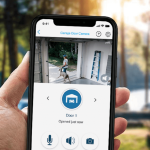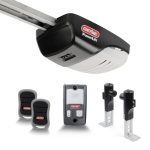Experiencing issues with your garage door opener not working can be both frustrating and inconvenient. Whether it’s failing to respond to the remote, making unusual noises, or not operating smoothly, understanding the underlying causes and how to address them is essential. In this article, we will explore various reasons why your garage door opener might be malfunctioning and provide practical solutions to get it back in working order efficiently.
Common Causes of Garage Door Opener Malfunctions
Before diving into troubleshooting steps, it’s important to identify common reasons why a garage door opener might stop working. Understanding these causes can save you time and effort in diagnosing the problem.
Power Supply Issues
One of the most frequent reasons for a garage door opener not working is a problem with the power supply. Check the following:
- Power Outlet: Ensure the opener is plugged into a functioning electrical outlet. Sometimes, the issue might simply be a loose plug or a tripped circuit breaker.
- Circuit Breaker: Verify that the circuit breaker hasn’t been tripped. Reset it if necessary.
- Power Cord: Inspect the power cord for any visible damage or wear. A damaged cord can prevent the opener from receiving power.
Remote Control Problems
Faulty remote controls can also lead to issues with your garage door opener. Consider these factors:
- Battery Life: The most common issue is dead or weak batteries. Replace the batteries and see if the opener responds.
- Signal Interference: Other electronic devices or strong radio signals can interfere with the remote’s signal. Ensure there are no devices causing interference nearby.
- Remote Programming: Sometimes, remotes lose their programming and need to be reprogrammed to communicate with the opener.
Sensor Alignment Issues
Modern garage door openers come equipped with safety sensors to prevent accidents. Misaligned sensors can cause the opener to malfunction.
- Sensor Position: Ensure that the sensors are properly aligned and facing each other. Even a slight misalignment can trigger the safety mechanism.
- Obstructions: Remove any objects blocking the sensor’s path. Dirt, cobwebs, or other debris can also interfere with sensor functionality.
- Wiring Problems: Check for any loose or damaged wires connecting the sensors to the opener unit. Secure or repair them as needed.
Mechanical Failures
Mechanical issues within the garage door system can prevent the opener from functioning correctly.
- Broken Springs: Garage doors use springs to counterbalance the door’s weight. If a spring is broken or worn out, the opener might struggle to lift the door.
- Worn Gears: Over time, the gears within the opener can wear down, leading to reduced performance or complete failure.
- Damaged Tracks: Inspect the door tracks for bends, dents, or other damage that might impede the door’s movement.
Electrical Component Failures
Various electrical components within the garage door opener can malfunction, causing the system to fail.
- Capacitors: These components store electrical energy. If a capacitor is faulty, the opener might not start or could stop working intermittently.
- Circuit Board Issues: The circuit board controls the opener’s functions. Damage or malfunction here can lead to a complete failure of the system.
- Motor Problems: The motor is crucial for the opener’s operation. If it overheats or fails, the door will not open or close.
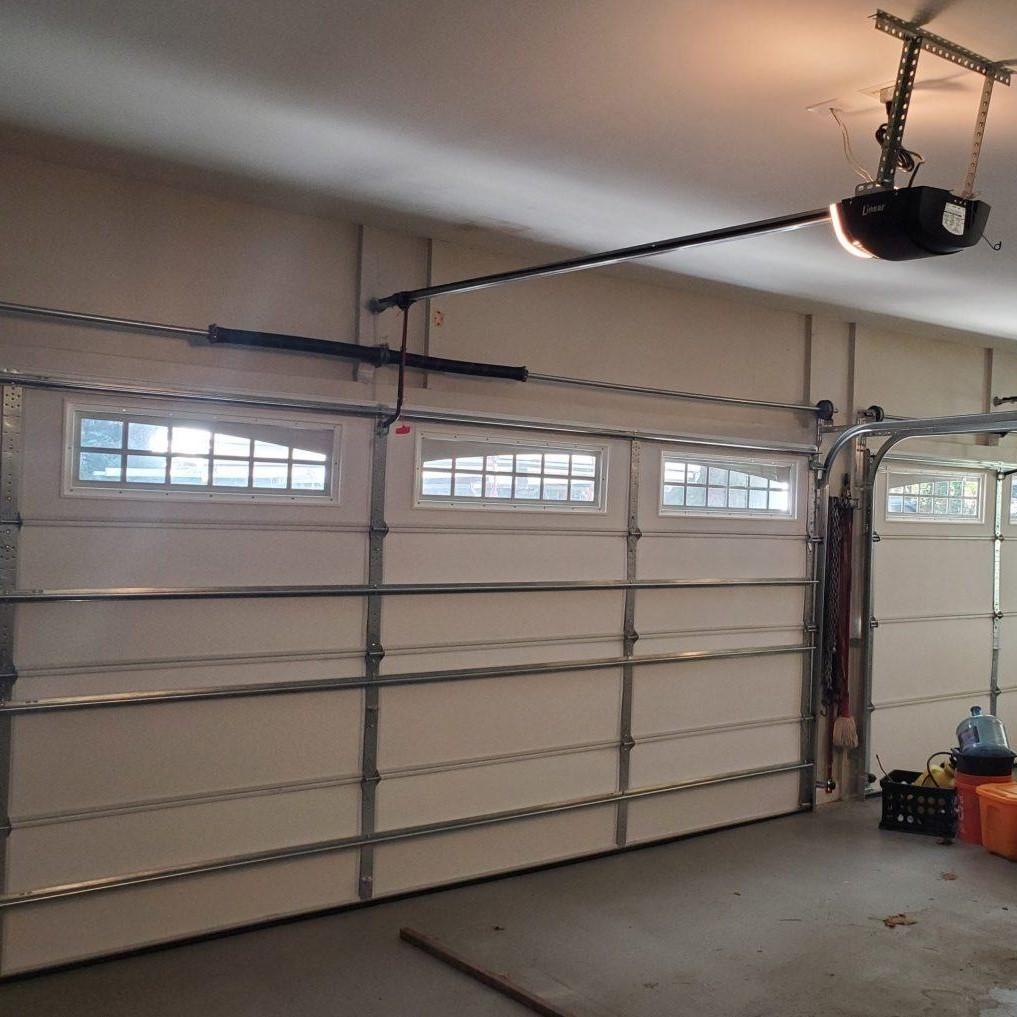 Step-by-Step Troubleshooting Guide
Step-by-Step Troubleshooting Guide
When your garage door opener is not working, follow these steps to diagnose and potentially fix the issue.
Step 1: Check the Power Supply
Start by ensuring that your garage door opener is receiving power.
- Verify Outlet Functionality: Plug another device into the same outlet to confirm it’s working.
- Inspect the Power Cord: Look for any visible signs of damage. Replace the cord if necessary.
- Reset the Circuit Breaker: Locate your home’s breaker panel and reset any tripped breakers.
Step 2: Examine the Remote Control
If the opener isn’t responding to your remote, address the remote itself.
- Replace the Batteries: This is the simplest fix and often resolves the issue.
- Reprogram the Remote: Follow the manufacturer’s instructions to reprogram the remote to the opener.
- Test the Remote’s Range: Move closer to the opener to see if distance was the problem.
Step 3: Inspect and Align the Sensors
Misaligned sensors are a common cause of opener failure.
- Check Sensor Placement: Ensure both sensors are aimed directly at each other.
- Clean the Sensors: Wipe away any dirt or debris that might be blocking the sensor’s view.
- Secure the Wiring: Make sure all wires connected to the sensors are intact and properly connected.
Step 4: Test the Garage Door Operation
Manually operate the garage door to see if it moves smoothly.
- Disconnect the Opener: Pull the emergency release cord to take control of the door manually.
- Check for Obstructions: Ensure nothing is blocking the door’s path.
- Observe the Door’s Movement: Look for any unusual resistance or noises that might indicate mechanical problems.
Step 5: Listen for Unusual Noises
Unusual sounds can indicate specific issues within the opener.
- Grinding or Squeaking: These noises often point to worn gears or lack of lubrication.
- Clicking Sounds: This could indicate an issue with the remote or the opener’s electrical components.
Step 6: Reset the Opener
Sometimes, resetting the garage door opener can resolve unexpected glitches.
- Unplug the Opener: Disconnect it from the power source for about 30 seconds.
- Plug it Back In: Restore power and attempt to operate the door again.
Step 7: Consult the User Manual
Refer to your garage door opener’s user manual for specific troubleshooting tips and instructions tailored to your model.
- Manufacturer’s Guidelines: Follow the recommended steps for diagnosing and fixing common issues.
- Error Codes: Look for any error indicators or codes that can help identify the problem.
When to Call a Professional
While many garage door opener issues can be resolved with basic troubleshooting, some situations require professional expertise.
Complex Electrical Problems
If you suspect issues with the circuit board, motor, or other electrical components, it’s best to consult a professional. These components can be dangerous to work with if you’re not experienced.
Spring and Cable Repairs
Garage door springs and cables are under high tension and can cause serious injury if handled improperly. Professional technicians have the right tools and knowledge to safely repair or replace these parts.
Persistent Sensor Issues
If your sensors remain misaligned despite your efforts, a professional can accurately diagnose and fix the problem, ensuring your garage door operates safely.
Opener Replacement
When your garage door opener is beyond repair or outdated, a professional can help you choose and install a new, efficient model tailored to your needs.
Preventative Maintenance Tips
Regular maintenance can prevent many issues that lead to your garage door opener not working. Implement these tips to keep your system running smoothly.
Lubricate Moving Parts
Regularly apply lubricant to the garage door’s hinges, rollers, and tracks. This reduces friction and wear, allowing for smoother operation.
Inspect and Tighten Hardware
Periodically check all hardware components, including bolts, screws, and brackets. Tighten any loose parts to maintain the door’s integrity.
Test Safety Features
Ensure that the safety sensors and auto-reverse functions are working correctly. Perform regular tests to confirm that the door stops and reverses when an obstruction is detected.
Clean and Clear the Tracks
Keep the garage door tracks free from debris, dust, and dirt. Use a damp cloth to wipe them clean and remove any obstructions that could hinder movement.
Check the Remote and Wall Controls
Test your remote controls and wall switches regularly to ensure they are functioning properly. Replace batteries as needed and address any signal issues promptly.
Upgrading Your Garage Door Opener
If you’re frequently experiencing issues with your garage door opener not working, it might be time to consider an upgrade. Modern openers come with advanced features that enhance functionality and security.
Smart Garage Door Openers
Smart openers connect to your home’s Wi-Fi network, allowing you to control and monitor your garage door from your smartphone. Features include:
- Remote Access: Open and close your door from anywhere.
- Notifications: Receive alerts when the door is opened or closed.
- Integration with Smart Home Systems: Sync with devices like Amazon Alexa and Google Smart Home for voice control.
Battery Backup Systems
Battery backup systems ensure your garage door opener continues to work during power outages. This feature provides peace of mind, especially during emergencies.
Enhanced Security Features
Upgrade to an opener with rolling code technology, which changes the remote’s access code each time it’s used. This prevents unauthorized access and enhances your home’s security.
Quieter Operation
Modern openers offer quieter operation through improved motor technology and better sound insulation. This is especially beneficial if your garage is attached to your home.
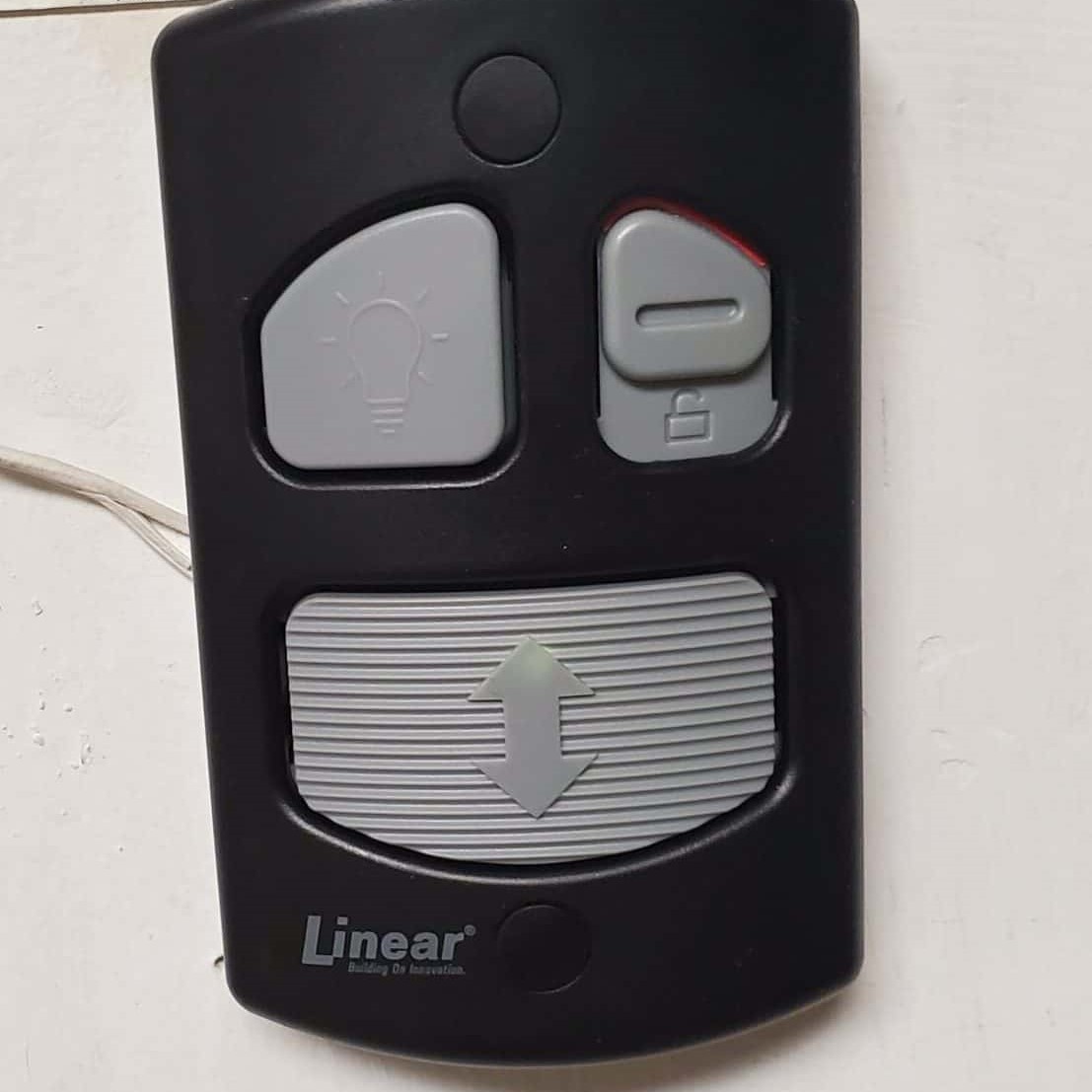 DIY Repairs You Can Handle
DIY Repairs You Can Handle
While some repairs require professional help, there are several maintenance tasks you can perform yourself to fix a garage door opener not working.
Replacing Remote Batteries
Changing the batteries in your remote is a simple task:
- Open the Remote: Use a small screwdriver to open the remote control.
- Replace the Batteries: Remove the old batteries and insert new ones, ensuring correct polarity.
- Test the Remote: Check if the opener responds to the newly powered remote.
Tightening Loose Screws and Bolts
Inspect your garage door opener for any loose screws or bolts and tighten them as needed to ensure stability.
Cleaning the Garage Door
Keep your garage door clean to prevent dirt and debris from affecting the opener’s performance. Use a mild detergent and water to wipe down the door regularly.
Resetting the Opener
If your opener is unresponsive, resetting it might help:
- Unplug the Opener: Disconnect it from the power source.
- Wait: Allow it to remain unplugged for about 30 seconds.
- Reconnect: Plug it back in and try operating the door again.
Troubleshooting Specific Garage Door Opener Issues
Different problems may require specific troubleshooting steps. Here are common scenarios and how to address them.
Garage Door Opener Makes No Sound
If your opener is silent when activated, consider these possibilities:
- Power Supply: Confirm the opener is receiving power by checking the outlet and power cord.
- Motor Issues: The motor might be burned out or malfunctioning, requiring professional repair.
- Circuit Board Failure: A faulty circuit board can prevent the opener from operating altogether.
Garage Door Opener Runs Continuously
If the opener doesn’t stop running after the door has opened or closed, it may indicate:
- Sensor Misalignment: Ensure the safety sensors are aligned and unobstructed.
- Limit Switch Settings: Adjust the limit switches to correctly set the door’s open and close positions.
- Track Obstructions: Clear any obstructions in the tracks that might be confusing the opener’s sensors.
Garage Door Opens Partially
Partial opening can result from several issues:
- Limit Switch Adjustment: The limit switches might need to be adjusted to allow the door to open fully.
- Broken Springs: Inspect the springs for breakage and replace them if necessary.
- Motor Strain: The motor might struggle due to excessive weight or a blockage in the tracks.
Garage Door Opener Remote Works Only at Close Range
Limited remote range can be caused by:
- Remote Battery: Replace the batteries to ensure a strong signal.
- Interference: Move other electronic devices away from the opener to reduce signal interference.
- Antenna Issues: Check the opener’s antenna for damage or misalignment and adjust it to improve reception.
 Safety Precautions When Handling Garage Door Openers
Safety Precautions When Handling Garage Door Openers
Working with garage door openers involves certain risks. Follow these safety tips to prevent accidents and injuries.
Disconnect Power Before Repairing
Always unplug the garage door opener before attempting any repairs to avoid electrical shocks.
Use Proper Tools
Ensure you use the correct tools for the job to prevent damaging components or causing injury.
Handle Springs with Care
Garage door springs are under high tension and can cause serious injury if mishandled. If you suspect a spring issue, contact a professional.
Follow Manufacturer Instructions
Refer to the user manual for specific guidelines and safety instructions related to your garage door opener model.
Keep Children and Pets Safe
Ensure that children and pets are away from the garage when performing maintenance or repairs to avoid accidents.
Benefits of Regular Garage Door Opener Maintenance
Maintaining your garage door opener regularly offers several advantages beyond preventing malfunctions.
Extended Lifespan
Regular maintenance helps prolong the life of your opener by preventing excessive wear and tear on its components.
Enhanced Performance
Well-maintained openers operate more smoothly and efficiently, reducing the likelihood of unexpected failures.
Increased Safety
Ensuring that all safety features are functioning correctly minimizes the risk of accidents and injuries.
Cost Savings
Preventative maintenance can help avoid costly repairs or the need for a complete opener replacement down the line.
Choosing the Right Garage Door Opener
Selecting the appropriate garage door opener can prevent future issues and ensure reliable performance. Consider these factors when choosing a new opener.
Type of Opener
There are several types of garage door openers, each with its own advantages:
- Chain-Driven Openers: Known for durability and reliability, suitable for heavy doors.
- Belt-Driven Openers: Quieter operation, ideal for attached garages.
- Screw-Driven Openers: Fewer moving parts, requiring less maintenance.
- Direct-Drive Openers: Offer high performance with quiet operation.
Motor Power
Choose an opener with appropriate motor power based on your garage door’s size and weight. Heavier doors require more powerful motors to operate smoothly.
Features and Technology
Modern openers come with various features that enhance convenience and security:
- Smart Home Integration: Control your opener via smartphone apps.
- Battery Backup: Ensures the opener works during power outages.
- Security Features: Rolling codes and encrypted signals protect against unauthorized access.
Installation and Compatibility
Ensure that the opener you select is compatible with your garage door type and that you can install it yourself or opt for professional installation if needed.
 Environmental Considerations for Garage Door Openers
Environmental Considerations for Garage Door Openers
Environmental factors can impact the performance and longevity of your garage door opener. Address these considerations to ensure optimal functioning.
Temperature Extremes
Garage door openers are exposed to varying temperatures, which can affect their components. Choose an opener rated for your local climate and perform regular maintenance to prevent issues caused by temperature fluctuations.
Humidity and Moisture
High humidity and moisture can cause rust and corrosion in your opener’s components. Keep the opener dry and consider using protective covers if your garage is prone to dampness.
Dust and Debris
Dust and debris can accumulate in your opener’s moving parts, leading to reduced performance. Regularly clean your garage and opener to minimize dust buildup.
Technological Advancements in Garage Door Openers
Advancements in technology have significantly improved the functionality and convenience of garage door openers. Stay informed about the latest features to enhance your garage door experience.
Wi-Fi Connectivity
Wi-Fi-enabled openers allow you to control and monitor your garage door from anywhere using a smartphone app. Features include:
- Remote Operation: Open or close your door from any location.
- Activity Logs: Track when your door is operated and by whom.
- Notifications: Receive alerts for door activity or maintenance needs.
Voice Control
Integrate your garage door opener with voice assistants like Amazon Alexa or Google Assistant for hands-free operation.
Enhanced Security Protocols
Newer models offer advanced security features, such as rolling codes and encrypted signals, which prevent unauthorized access and enhance overall security.
Energy Efficiency
Modern openers are designed to be more energy-efficient, reducing power consumption and lowering your electricity bills.
Frequently Asked Questions About Garage Door Openers Not Working
Why is my garage door opener making a clicking sound but not opening the door?
A clicking sound often indicates that the opener is receiving a signal but cannot lift the door. This could be due to:
- Insufficient Power: Check the power supply and connections.
- Motor Issues: The motor might be malfunctioning.
- Broken Springs: Inspect the springs for any damage.
How can I reset my garage door opener?
To reset your opener:
- Unplug the Opener: Disconnect it from the power source.
- Wait: Leave it unplugged for about 30 seconds.
- Reconnect: Plug it back in and try operating the door again.
- Reprogram Remotes: If necessary, follow the manufacturer’s instructions to reprogram your remotes.
Why won’t my garage door opener respond to the remote?
Possible reasons include:
- Dead Remote Batteries: Replace the batteries.
- Remote Misprogrammed: Reprogram the remote to the opener.
- Signal Interference: Reduce interference from other electronic devices.
What should I do if my garage door is stuck halfway?
If your door is stuck halfway:
- Check for Obstructions: Remove any objects blocking the door’s path.
- Inspect the Sensors: Ensure sensors are clean and aligned.
- Manually Operate the Door: Use the emergency release to move the door and identify any mechanical issues.
When should I replace my garage door opener?
Consider replacing your opener if:
- Frequent Repairs: It requires constant repairs.
- Old Technology: It lacks modern features like smart connectivity.
- Safety Concerns: It does not have up-to-date safety features.
- Noisy Operation: It operates too loudly, indicating potential wear.
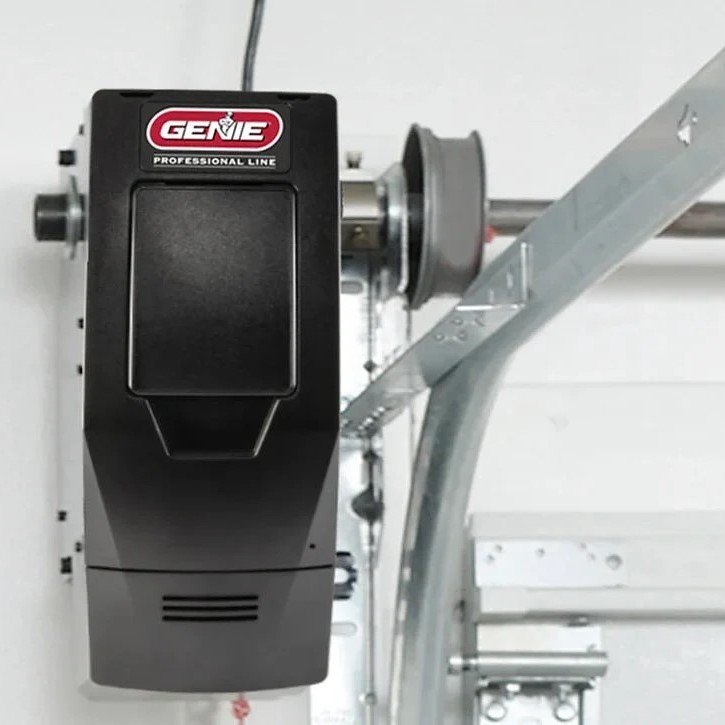 Final Thoughts on Resolving Garage Door Opener Issues
Final Thoughts on Resolving Garage Door Opener Issues
Dealing with a garage door opener not working can disrupt your daily routine, but with the right approach, many problems can be resolved quickly. Start by identifying common issues such as power supply problems, remote control failures, or sensor misalignments. Follow our step-by-step troubleshooting guide to address these issues effectively. Regular maintenance and understanding when to seek professional help can extend the lifespan of your garage door opener and ensure it operates smoothly for years to come.
By staying proactive and informed, you can mitigate the inconvenience of a malfunctioning garage door opener and maintain the security and accessibility of your home. Whether you choose to handle minor repairs yourself or rely on professional services for more complex issues, taking prompt action is key to keeping your garage door functioning flawlessly.
